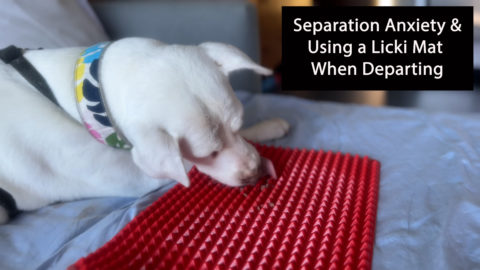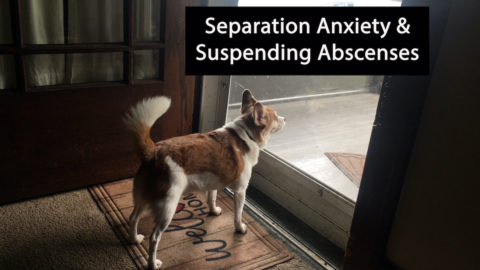6 Big Mistakes New Puppy Parents Make
Many puppy parents make mistakes that can lead to behavioral issues as they grow into adulthood. In the video below I help you understand the six mistakes puppy parents tend to make and how to avoid them.
Many puppy parents make mistakes that can lead to behavioral issues as they grow into adulthood. In the video below I help you understand the six mistakes puppy parents tend to make and how to avoid them.

A question I frequently get with separation anxiety centers around using a Licki Mat or another type of food puzzle, and whether or not that might become a pre-departure cue for a caregiver that is departing the home.
As we move forward with the separation anxiety protocols, one of the first steps is that we want to suspend absences. We want to avoid putting the dog into a situation where they would practice the unwanted behavior and the fear, anxiety and stress associated with being alone or without having access to their person or people.
We would use a desensitization protocol in most cases, and although I’m a positive reinforcement trainer, we’re not using food specifically in the protocol. That is because sometimes the dog would either eat all the food and then those symptoms would reemerge, meaning we’ve momentarily distracted them. Or because they wouldn’t touch the food due to the fear, anxiety, and stress of being by themselves.
The place where we can sometimes use a Licki Mat or another type of food puzzle would be as a “bridge.” That’s when there are multiple people in the household and one person needs to depart. We need to briefly keep the dog occupied so they’re not entirely focused on someone exiting the home in that type of scenario.
However, you would also want to vary the strategies that you’re using. For example sometimes using food puzzles, sometimes different food puzzles, sometimes maybe going on a walk, sometimes playing some training games in a different part of the house.
In other words, you wouldn’t want the puzzle to become a pre-departure cue and you would also need to use the puzzle at different times when someone wasn’t planning to depart.
Prefer to watch a video about food puzzles and separation anxiety? See below.
Want to learn more about helping your dog to cope with Canine Separation Anxiety? Register for my Separation Anxiety course.
Today I’m talking about separation anxiety. A common question that I get is about adjusting schedules while working through protocols.

Someone recently asked, “What if pet guardians don’t have the ability to adjust their schedules?” I wanted to go back for a minute and talk about the key to any behavior modification. The key is to sidestep continuing to put an animal into a situation where they practice the unwanted behavior.
In the case of separation anxiety, we want to avoid dogs being put into a scenario where they would rehearse all of the behaviors associated with fear, anxiety and stress of being left by themselves or without access to their person or people.
Again, from a practical standpoint, we want to avoid those rehearsals by suspending absences. To not do so is in many cases a little bit like shoveling sand against the tide or taking two steps forward and then three steps backwards.
A key component is to set everybody up for success by avoiding putting the dog in the situation where they would practice those unwanted behaviors while then choosing to work through an appropriate separation anxiety desensitization protocol.
Prefer to watch the “Separation Anxiety & Suspending Absences” video? See below.